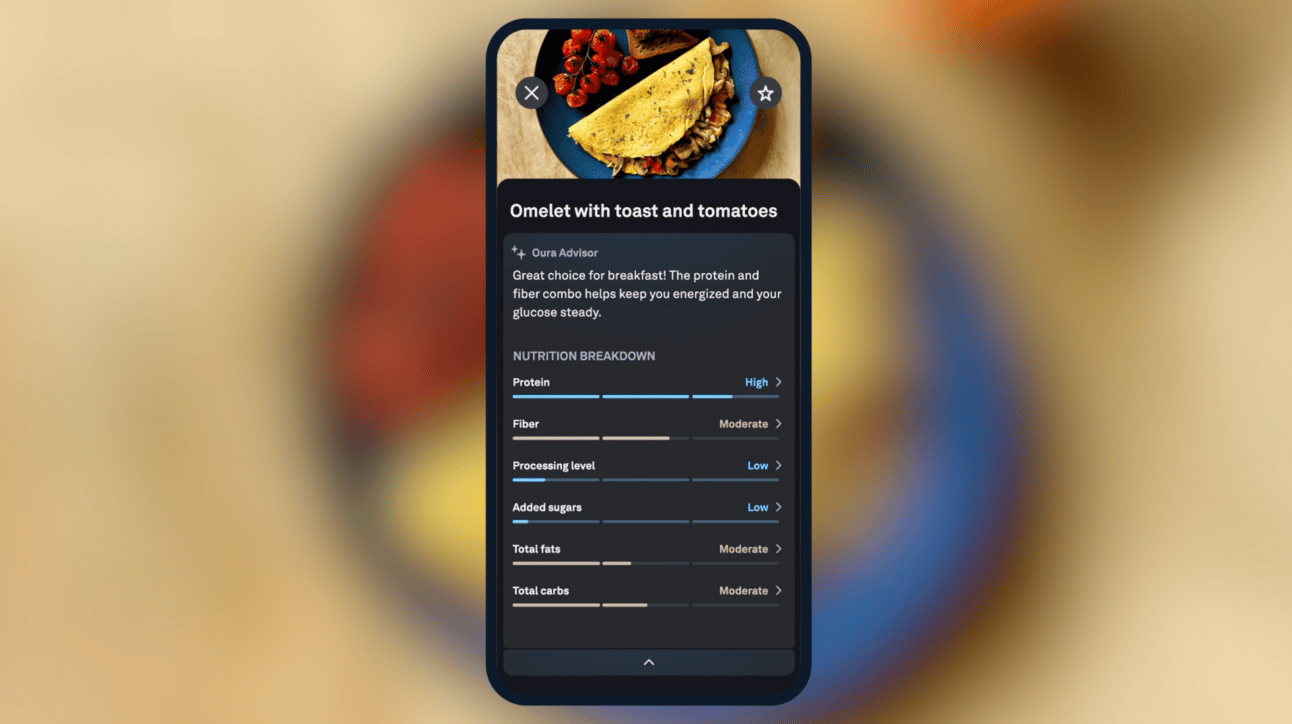Big News: Dexcom and Oura Join Forces
Dexcom just made a bold move — its new Stelo CGM now integrates with the Oura Ring, creating one of the most exciting new pairings in wearable health tech. This collaboration could usher in a new era of metabolic awareness for everyday users, giving people a clearer picture of how their lifestyle choices impact blood sugar levels in real time.
Until now, glucose data has largely lived in the realm of diabetes care. But with over 42 different factors influencing blood sugar — including sleep, stress, exercise, and nutrition — the importance of understanding glucose levels could go beyond people with diabetes. This partnership brings that concept to life.
By syncing Stelo with the Oura Ring, users can now see how their glucose fluctuates in context with sleep quality, activity levels, and recovery metrics. This kind of integrated insight is the next evolution of health wearables — and could pave the way for broader CGM adoption beyond clinical use.
Oura’s New Metabolic Features: Meals and Glucose
With the launch of this integration, Oura is introducing two AI-enabled metabolic health features — Meals and Glucose — now rolling out to U.S.-based Oura Ring Gen3 and Gen4 members using the Oura App in English.
Meals: This feature allows users to log or edit meals directly in the app. Over time, the system learns your eating patterns and begins to provide feedback on how your meals affect your readiness and recovery.

The Oura App analyzes images of food on your plate to provide analysis of key nutrition components, including macronutrients. (Source: Oura)
Glucose: For users wearing a Dexcom Stelo sensor, this feature shows blood glucose patterns over time, correlating them with lifestyle behaviors like sleep, stress, and activity. You’ll see your glucose curve throughout the day, helping you understand how specific moments — like meals, workouts, or poor sleep — affect your metabolic response.
These two features work together to give a more complete picture of your metabolic health. You don’t just see a number — you see the story behind it. And this is where the Dexcom integration comes in.
What the Oura x Stelo Integration Looks Like
Users who wear both the Oura Ring and Dexcom’s Stelo sensor can now access a new Metabolic Health experience inside the Oura app, broken into two key insights:
Metabolic Graph: A dynamic timeline showing glucose data alongside your sleep, meals, activity, and recovery markers.
Daily Insights: Personalized messages helping you understand patterns — like how a night of poor sleep raised your glucose baseline, or how a post-dinner walk improved your response.
Currently, this integration is exclusive to Stelo, not Dexcom G7, reinforcing Stelo’s positioning as a lifestyle-oriented CGM.

The Oura app’s glucose graph highlights potential factors influencing glucose levels—such as stress, meals, movement, sleep, and more. (Source: Oura)
What Is the Stelo CGM?
Stelo is Dexcom’s first over-the-counter continuous glucose monitor (CGM). It’s designed not for people with insulin-requiring diabetes, but for the estimated 96 million Americans with pre-diabetes or type 2 diabetes, and others simply looking to better understand their metabolic health.
The Stelo system uses the same core sensor technology as Dexcom’s G7 but is packaged as a lifestyle tool — with no need for a prescription, no alarms, and a simplified user interface.
Unlike medical CGMs, Stelo doesn’t feature alerts for high or low glucose, and it's not meant to be used for dosing decisions. Instead, it provides a general view of glucose trends, helping users connect the dots between what they eat, how they sleep, and how their body responds. I had an in-depth conversation with Dexcom about Stelo in the video below.
Could Dexcom G7 Be Next?
As a Dexcom G7 user myself, I’d love to see this kind of deep health integration extend to Dexcom’s flagship CGM. Imagine combining the precision of medical-grade glucose tracking with the contextual feedback Oura provides — it could be a game changer for people living with type 1 or type 2 diabetes — who are using insulin — trying to make sense of the 42+ variables that affect their blood sugar.
Whether it’s through official integrations or third-party platforms, this partnership signals a bigger shift: CGM data is no longer just for clinicians — it’s for anyone who wants to take a more informed approach to their health.
If you’re curious about what this partnership means for the future of diabetes treatment, check out my video below or read my full breakdown.
And stay tuned for updates on diabetes tech and news by following along on Tik Tok, Instagram, Youtube and my podcast.
Help Advance Diabetes Research and Get Paid For It!

The T1D Exchange Registry surveys participants for data on disease management, CGM data, and self-reported outcomes. (source: T1D Exchange Registry)
Head to the T1D Exchange Registry, where you can help push diabetes tech and research forward! After a quick 15-minute survey, you’ll gain access to a personal portal with survey and clinical trial opportunities—some of which offer compensation.
Sign up here to be part of the future of diabetes innovation. Available for U.S. residents only.
Product link disclosure - In order to provide free content, we use affiliate links. This means if you make purchases through certain links, we may earn a small commission (at no extra cost to you).

